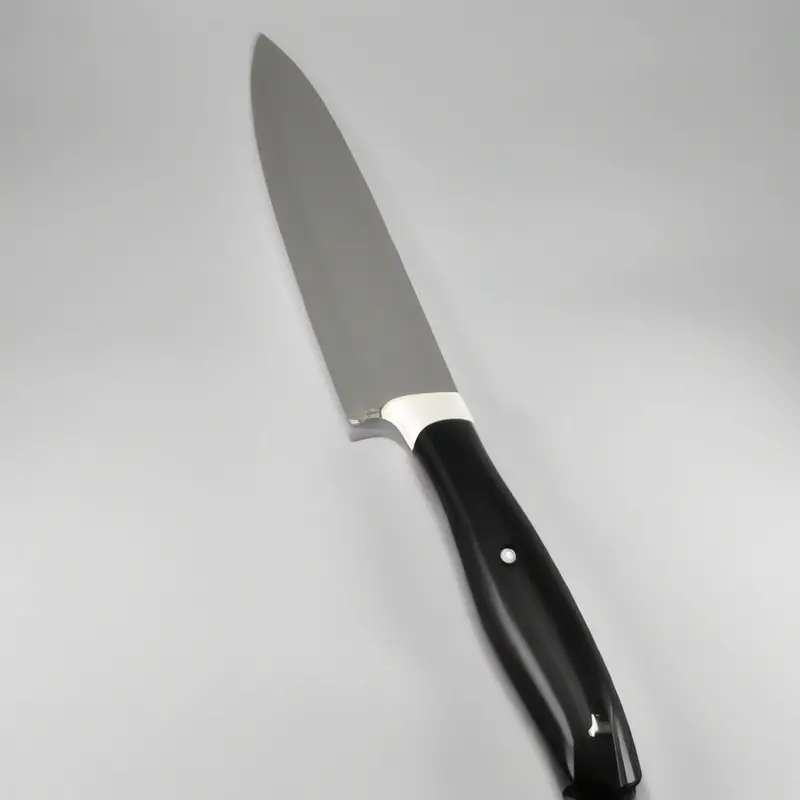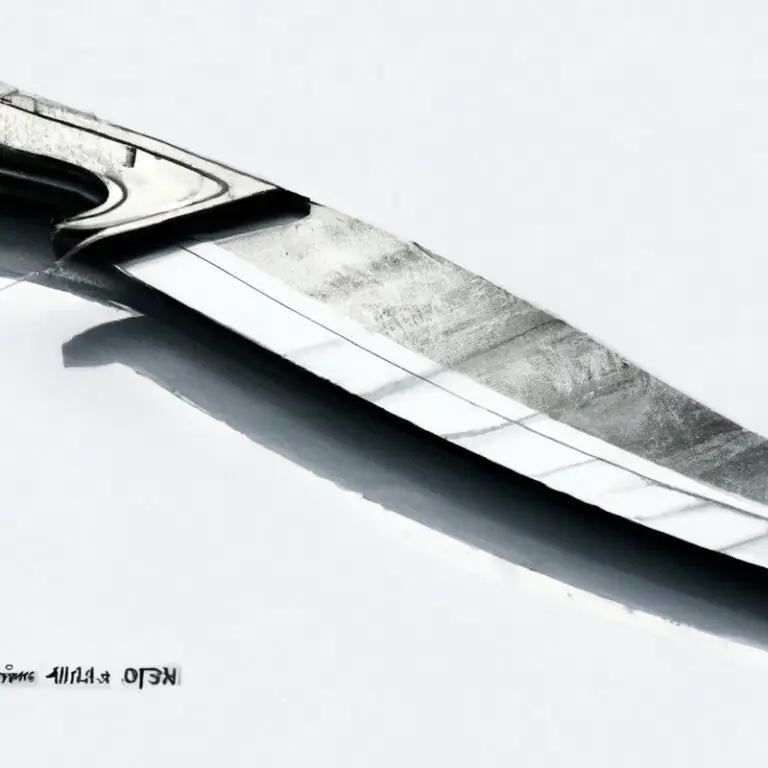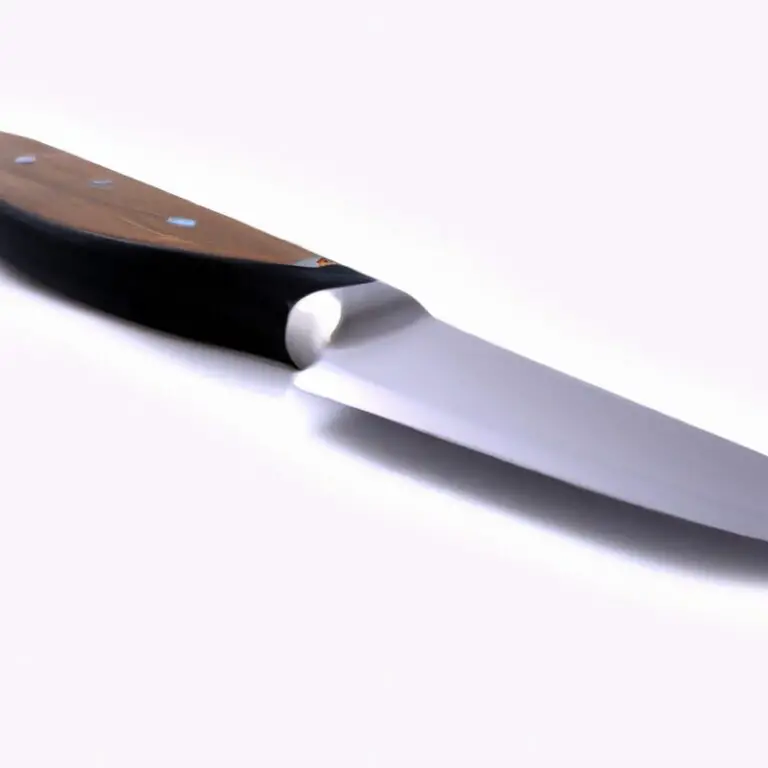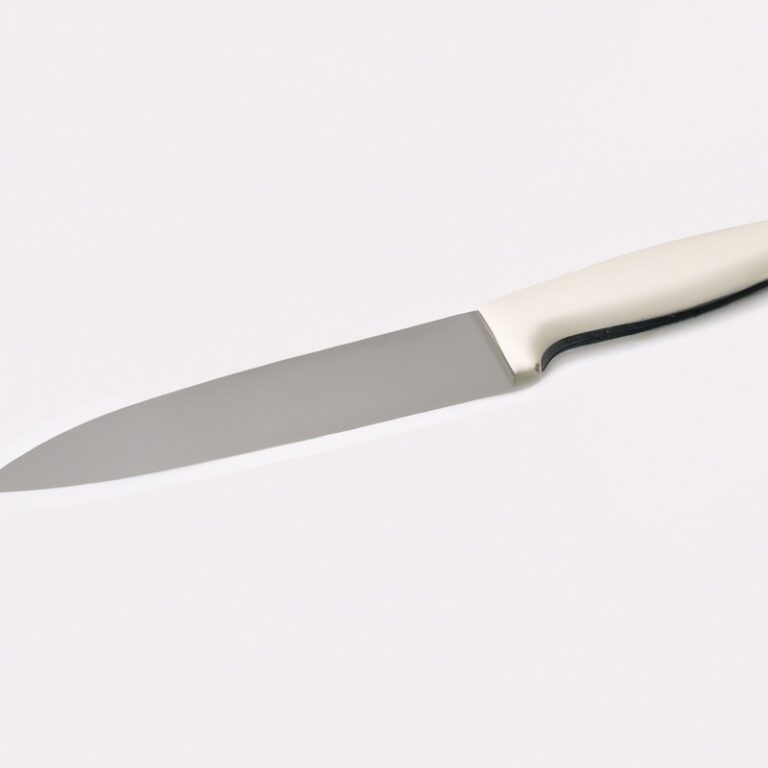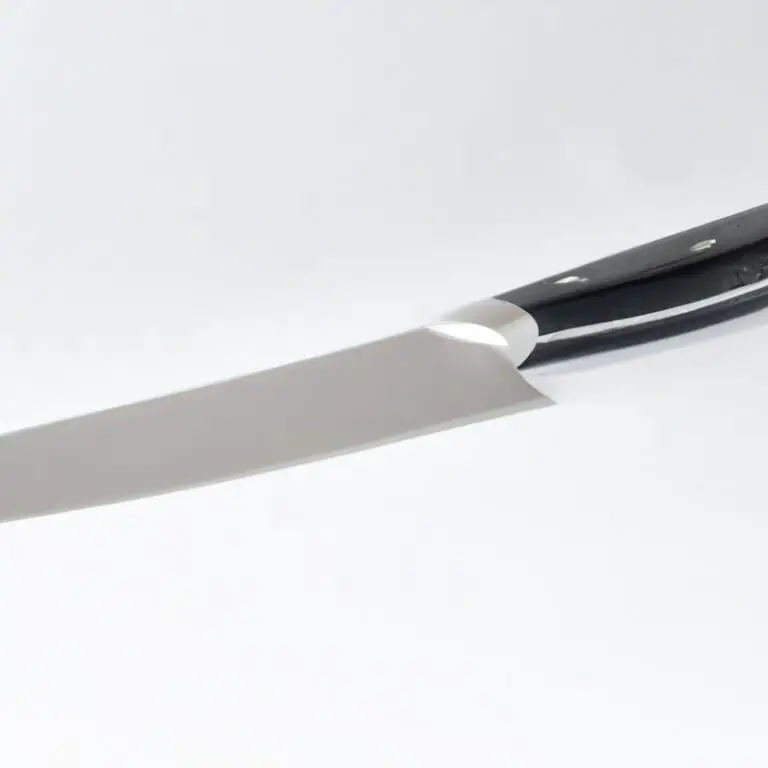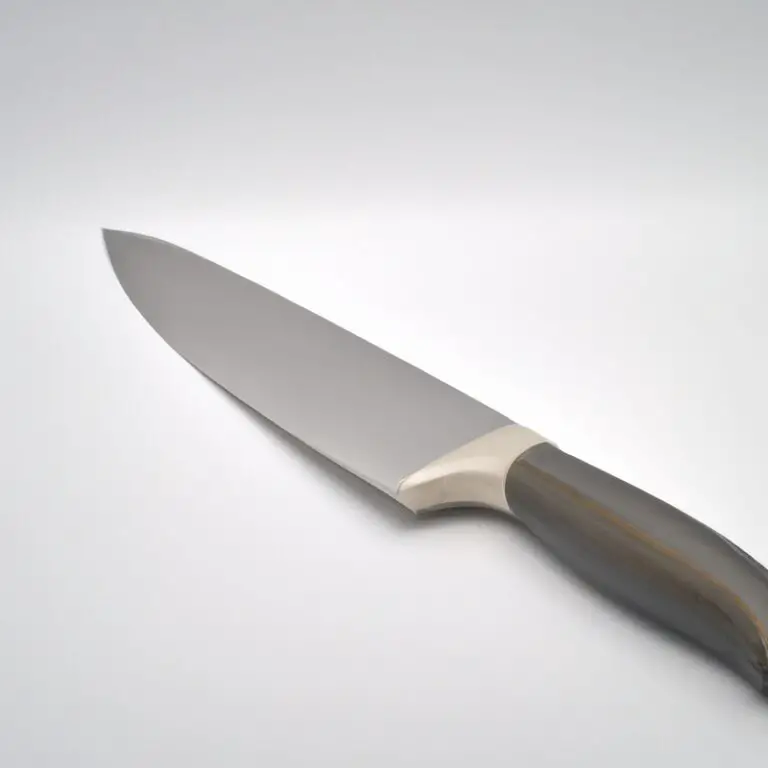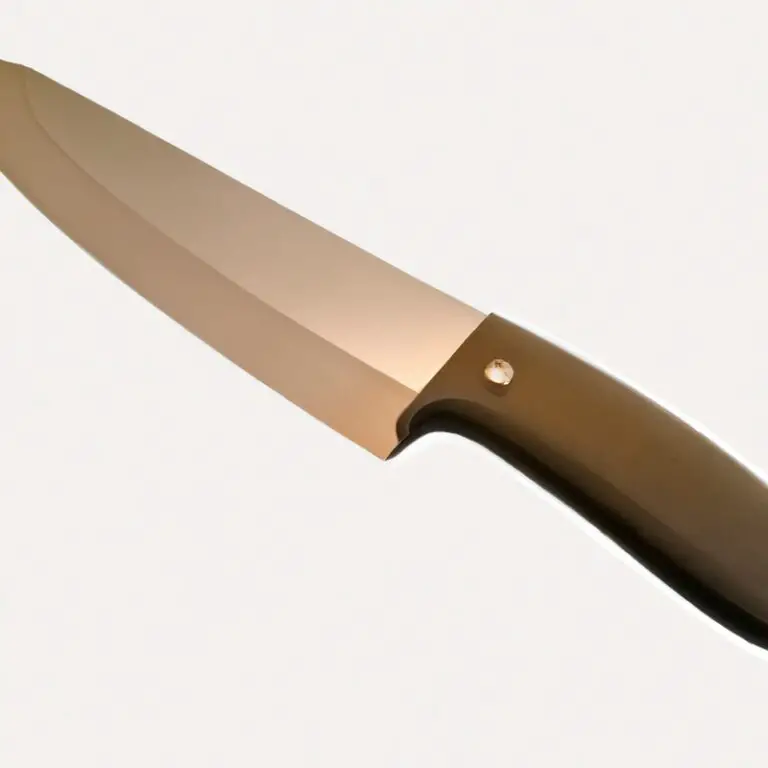What Are The Different Styles Of Chef Knife Handles?
Key Takeaways:
- The handle style of a chef knife can greatly affect its comfort and usability during food preparation.
- Common styles of chef knife handles include traditional western, Japanese wa, and hybrid designs.
- Factors such as size, weight, and grip should be considered when selecting a chef knife with a suitable handle style.
- To ensure a comfortable and safe grip, it is important to handle and test different handle styles before making a purchase.
As a seasoned chef or a cooking enthusiast, having the right knife in your arsenal is crucial. It’s not just about the blade; the handle also plays a vital role in creating a perfect balance and grip.
From classic wooden options to modern materials like titanium and silicone, the variety of styles for chef knife handles can sometimes be overwhelming.
In this article, we’ll explore the different types of chef knife handles, their unique features and benefits, and how to choose the right handle for your needs. So, let’s dive in and find the perfect fit for your kitchen!
| Style of Chef Knife Handle | Description | Pros | Cons |
|---|---|---|---|
| Western | Thick handle with a straight or slightly curved shape that narrows towards the blade. | Comfortable grip, good for heavier use or chopping, widely available. | Some find it less aesthetically pleasing, not suitable for pinch grip. |
| Japanese | Slimmer handle with a D-shape that tapers towards the blade. Often made of wood with a textured surface. | Lightweight and well-balanced, suited for precise cuts and pinch grip, stylish design. | May take time to get used to the different grip, less suitable for heavier use or chopping, not as widely available. |
| Hybrid | Combination of Western and Japanese styles, often with a slimmer handle than a Western but thicker than a Japanese handle. | Mix of the benefits of both styles, suitable for different hand sizes and grip preferences. | May not be the best at either style, some may find the grip uncomfortable or awkward. |
Wooden handles: The classic and traditional choice for chef knives
Wooden handles are a classic and traditional choice for chef knives. They offer a unique aesthetic appeal and a comfortable grip.
Wooden handles are available in different types of wood such as cherry, ebony, oak, and walnut.
They are also renowned for absorbing moisture, which ensures the handle’s stability and reduces the incidence of slipping. However, wooden handles require regular maintenance and careful washing to prevent the absorption of liquids that can damage the wood.
Moreover, wooden handles are prone to cracking and warping over time if exposed to water or excessive heat.
Nonetheless, wooden handles remain a popular choice among professional and home chefs for their timeless charm and natural feel.
Plastic handles: Affordable and easy to maintain options
Plastic handles are an affordable and practical option for chef knife handles. They are made of sturdy, impact-resistant materials that resist moisture, heat, and chemicals.
Plastic handles are also easy to clean and require minimal maintenance.
They can be molded into different shapes and sizes, providing a comfortable and secure grip for the user. However, plastic handles may not have the same aesthetic appeal as other materials, and may not last as long as more durable options like stainless steel or titanium.
Still, plastic handles offer a great cost-effective solution for chefs who prioritize functionality over luxury.
Stainless steel handles: Modern and sleek, with excellent durability
Stainless steel handles are a popular choice for modern chef knives due to their sleek and contemporary appearance. They offer excellent durability, added weight balance to the knife, and resistance against corrosion and rust.
However, they can sometimes be slippery when wet, so it’s essential to ensure a proper grip to prevent accidental slips.
They are also relatively easy to clean and maintain, making them a preferred choice for busy cooks and professional kitchens. Overall, stainless steel handles are a reliable and excellent option for those who prefer a sleek, modern look with high durability.
Composite handles: A hybrid option with the combination of different materials
Composite handles are constructed by combining different materials, such as wood and resin, to create a unique look and feel. The combination of materials adds to the knife’s durability, making it strong and resistant to wear and tear.
These handles offer an excellent grip and are comfortable to hold, making them ideal for extended use in the kitchen.
Additionally, composite handles are available in various colors and designs, making them highly customizable. They are a practical option for chefs who want a durable and unique handle for their knives.
Micarta handles: Strong and durable, with a unique texture
Micarta handles are composed of resin and linen, canvas, or paper. The combination of these materials creates a strong and durable handle, ideal for heavy use in professional kitchens.
Micarta handles have a unique texture that offers excellent grip, even when wet.
The texture is also visually appealing, giving the knife a rugged, industrial look. Micarta handles are easy to maintain and clean, making them a popular choice for many chefs.
They are available in a wide range of colors and patterns, allowing for a personalized touch.
Overall, Micarta handles are a versatile and reliable choice for any chef knife.
Carbon fiber handles: Lightweight and strong, with excellent grip
Carbon fiber handles are made from carbon fibers that are woven together and then held together with resin. This type of handle is exceptionally lightweight yet extremely durable, making it a popular choice among chefs who want a knife that is comfortable to use for extended periods.
The fibers are incredibly strong, which means the handle won’t easily crack or break under pressure.
Additionally, the material offers excellent grip, even when wet, ensuring that your knife won’t slip while you work. Carbon fiber handles also have a sleek and modern appearance, making them a popular choice for chefs who want their tools to look as good as they perform.
Overall, carbon fiber handles provide a unique combination of strength, comfort, and style that is hard to beat.
G10 handles: Resistant to heat and moisture, excellent for professional kitchens
G10 handles are made from a fibrous material, originally used in the aerospace industry. They are highly durable, heat and moisture resistant, making them popular in professional kitchens.
G10 handles are designed to withstand heavy use and offer ergonomic grip and balance.
They are also hygienic and easy to clean, making them ideal for chefs who use their knives throughout the day. The G10 handles come in a variety of colors and textures, making them a versatile option for customization.
Overall, G10 handles are excellent for chefs who require a comfortable, durable, and functional grip on their knives.
Horn handles: A luxurious option, with excellent craftsmanship and aesthetic appeal
Horn handles are a luxurious option for chef knives, offering excellent craftsmanship and aesthetic appeal. Horn is a natural material that gives an organic look and texture to the handle, making each handle unique.
The material is durable and resistant to wear and tear, making it an excellent choice for professional kitchens.
The horns used come from domesticated cattle, which ensures a sustainable source of raw material. Horn handles require a specialized process for shaping and polishing, which increases their cost.
However, the result is a stunning and exclusive handle that will elevate the entire knife’s value.
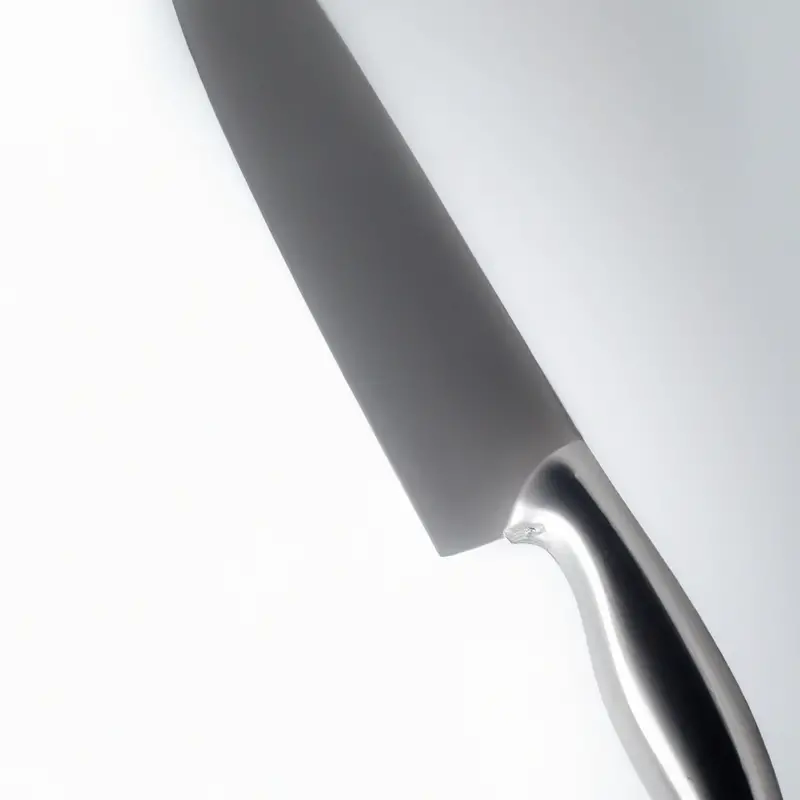
Mother of pearl handles: Elegant, delicate, and visually stunning
Mother of pearl handles are known for their elegance, delicacy, and visually stunning appearance. They are made from the inner lining of shells, which are then hand-carved and placed on top of a sturdy handle material.
Mother of pearl handles are a luxurious option that is favored by those who prioritize beauty and sophistication in their chef knives.
However, it is important to note that they may not be the most practical option for frequent use in a professional kitchen as they are delicate and require extra care when cleaning. Overall, mother of pearl handles are a striking addition to any knife collection, but may be better suited for occasional use or display rather than regular use.
Resin handles: Customizable and unique, with a wide range of colors and designs
Resin handles have gained popularity in recent years due to their unique and customizable design options. Resin is a thermoplastic material that can be molded into any shape and color, making it a great choice for creating unique and personalized chef knife handles.
With the ability to add glitter, metallic, or even natural elements and textures, the possibilities for customization are endless.
Resin handles also offer excellent durability and grip, making them a practical choice for daily use in professional kitchens. Plus, they are relatively easy to maintain and can withstand exposure to moisture, heat, and chemicals.
Whether you want a chic and modern handle or a colorful and artistic design, resin handles offer a wide range of options to suit your style and needs.
Titanium handles: Durable and lightweight, with excellent corrosion resistance
Titanium handles are becoming increasingly popular among chefs due to their durability and lightweight design, along with excellent corrosion resistance. Titanium is one of the strongest and most lightweight materials used in knife handle making, making it an excellent choice for those who want a long-lasting and comfortable handle.
Titanium handles are also excellent for those who require anti-corrosion features as the material is highly resistant to corrosion, which can help extend the lifespan of your knife.
Overall, titanium handles are an excellent investment if you are looking for a durable, long-lasting, and corrosion-resistant handle for your chef’s knife.
Bone handles: Natural and stylish, with unique variations in texture and color
Bone handles are a natural and stylish option for chef knives, offering unique variations in texture and color. They can add a rustic and vintage touch to any kitchen tool, and their durability ensures they can withstand heavy usage.
The texture and color of bone handles vary based on the specific animal bone used, adding a unique touch to each knife handle.
However, it is important to note that bone handles require proper care and maintenance to avoid cracking or discoloration. They should be wiped dry after use and periodically treated with mineral oil to maintain their appearance.
Leather handles: Comfortable and ergonomic, with a traditional and rustic feel
Leather handles are a popular choice among chefs due to their comfortable and ergonomic design. They have a traditional and rustic feel that adds to the overall aesthetic appeal of the knife while providing excellent grip and tactile sensation.
Leather handles are commonly made from high-grade leather, offering superior durability and a long lifespan.
They are also easy to clean, and their natural textures make them stand out from other handle materials. If you’re looking for a chef’s knife that offers comfort, grip, and an authentic rustic appeal, then a leather handle knife is an excellent choice.
Ironwood handles: Dense and durable, with a unique grain pattern and aesthetic appeal
Ironwood handles are a popular choice among chefs for their strength and durability. The density of ironwood provides a comfortable and weighty grip, while its unique grain pattern adds an aesthetic appeal.
This type of handle is easy to maintain and does not crack or warp easily, making it a long-lasting investment.
With its striking appearance, ironwood is an excellent option for those chefs who want to add a touch of elegance to their kitchen knives.
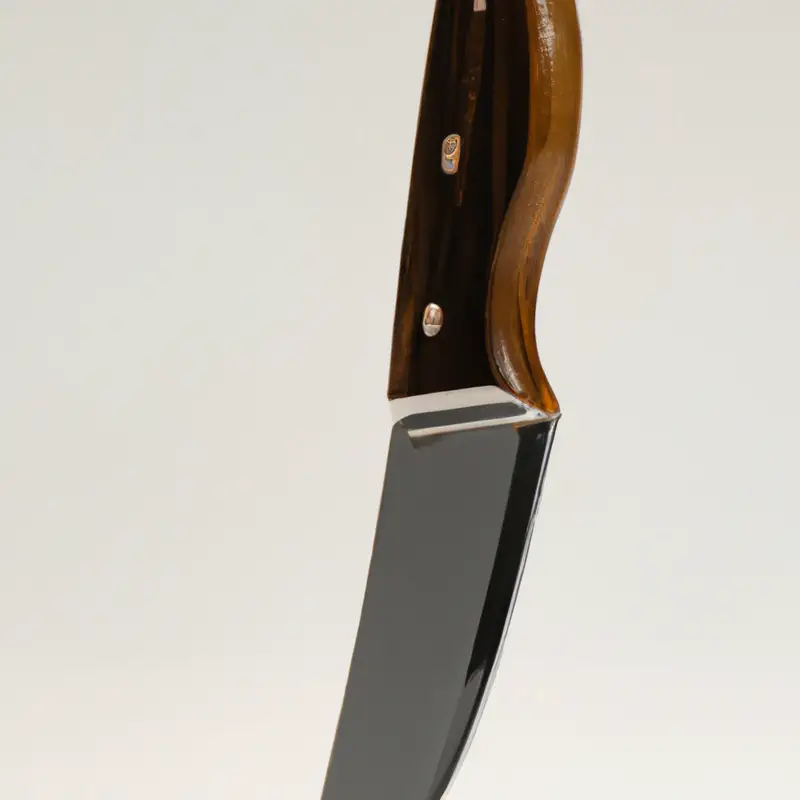
Olive wood handles: Hard and durable, with a distinctive color and visual appeal
Olive wood handles are a popular choice for chef knife handles due to their hardness and durability. They also offer a distinctive color and visual appeal with their unique grain patterns.
Olive wood is a sustainable and environmentally friendly option, making it an attractive choice for those looking for eco-friendly alternatives.
Additionally, olive wood handles provide a comfortable grip for users and are resistant to water damage, ensuring they last longer than other types of wood. Therefore, choosing olive wood handles for your chef knife can provide both functional and aesthetic benefits.
Pakka wood handles: A combination of natural wood and resin, offering strength and durability
Pakka wood handles are a combination of natural wood and resin, which creates a strong and durable material. The wood is impregnated with a resin under high pressure to make it more resilient and resistant to moisture.
This type of handle offers an excellent grip and prevents hand fatigue, making it a popular choice for chef knives.
Pakka wood handles are also highly customizable and come in various colors and designs, making them unique and aesthetically pleasing.
Silicone handles: Heat-resistant and comfortable, with excellent grip and easy cleaning
Silicone handles are a popular choice for chef knives due to their heat resistance, comfort, grip, and easy cleaning. The soft and pliable material of the silicone handle provides a comfortable grip, which is particularly useful during prolonged cooking sessions.
Moreover, silicone handles are heat resistant, meaning they do not become too hot to touch, even when used for extended periods of time.
Additionally, silicone handles are easy to clean, as they do not absorb flavors, odors, or stains, allowing for minimal maintenance. Overall, silicone handles are an excellent grip option for both professional chefs and homemakers alike.
Ceramic handles: Ultra-lightweight and corrosion-resistant, with a modern and minimalist style
Ceramic handles are a popular choice for chef knives due to their ultra-lightweight properties and corrosion-resistant capabilities. They offer a sleek and modern look, with a minimalist style that appeals to many.
Ceramic handles are made by firing clay at high temperatures, resulting in a material that is durable and resistant to wear and tear.
The downside to ceramic handles is their brittle nature, making them susceptible to cracking or breaking if dropped. However, with proper care and handling, ceramic handles can provide a long-lasting and stylish addition to any chef knife collection.
Brass handles: Elegant and stylish, with a warm and classic appearance
Brass handles are a classic and elegant choice for chef knife handles. This versatile material complements a range of blade styles and designs, from traditional to modern.
Brass handles are durable and long-lasting, with a warm and inviting aesthetic.
They also offer excellent grip and weight balance, making them a popular choice for professional chefs and home cooks alike. While brass may tarnish over time, this can be easily polished away to restore their original shine.
With their timeless appeal and practical benefits, brass handles are an excellent option for any kitchen.
Copper handles: Durable and aesthetically appealing, with a beautiful patina over time
Copper handles offer both durability and beauty to your chef knife. Copper is known for its strength and resistance to wear and tear.
It is also a natural antibacterial material, making it a hygienic choice for kitchen knives.
Copper handles develop a patina over time, giving them a unique and aged appearance that is coveted by many chefs. The patina also serves as a protective layer, preventing further corrosion of the copper material.
However, copper does require maintenance to maintain its appearance and prevent rust or tarnishing.
Regular cleaning and polishing are recommended to keep the handle looking its best. Overall, copper handles are a great choice for those who appreciate both aesthetics and functionality in their chef knives.
Final Verdict
The handle of a chef knife is not only responsible for providing comfort and grip, but also contributes to the overall aesthetic appeal and durability of the knife. Whether you prefer traditional wooden handles or modern composite materials, there is a wide range of options available to suit your needs and preferences.
By understanding the unique features and benefits of each style, you can choose the right handle to enhance your culinary experience and elevate your skills.
Remember, investing in a high-quality chef knife with the right handle can make all the difference in your kitchen. With this knowledge, you can confidently select a chef knife with a handle that meets your standards, fits your hand, and complements your style.
Happy cooking!

